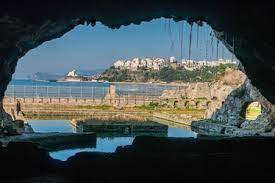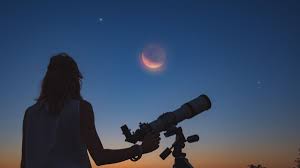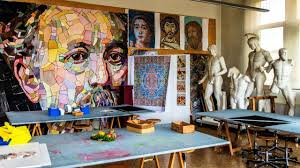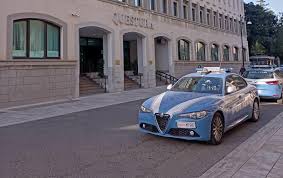Italy: See the summer solstice from a Roman Emperor’s party cave

Rome: When summer arrives, celebrations of the solstice happen all over the world. In Italy, la dolce vita unfolds in Sperlonga, between Rome and Naples, in the middle of a coastal stretch called the Riviera of Ulysses.
Sperlonga is set on a promontory, with a curve of beach clubs below, adorned with perfect rows of colorful umbrellas. Bordering the beach is an alluring sight: a giant cave opening to the sea. Recent discoveries reveal Sperlonga’s cave to be the location of an extraordinary astronomical phenomenon dating to ancient Roman times.
The cave at Sperlonga was the place to be in summers of the first century A.D., if you were lucky enough to be invited by Emperor Tiberius. It was part of his massive villa, remodeled to be an awe-inspiring, open-air banquet room. Romans would boat there, escaping the heat of the Eternal City, and dine while reclining on benches in the cave’s dining niche (the triclinium), which was decorated with mosaics and shells.

It was an atmosphere that mixed myth with reality. As this coast was thought to be the location of events in Homer’s Odyssey, diners were surrounded with enormous marble sculptures that recounted the trials of Ulysses (Greek name, Odysseus)—dramatic images of the hero thrusting a spear to blind the giant cyclops Polyphemus or of his ship being attacked by monstrous Scylla. The natural backdrop was the same that enchants travelers today: sparkling sea and Mount Cicero, where Ulysses was captured by the sorceress Circe.
During the summer solstice, guests to Tiberius’s cave experienced a wondrous event: The dining niche was designed by his architect and astronomer to be directly lit by the rays of the setting sun. The discovery of the marvelous alignment was made only recently by archaeologist Marina De Franceschini with archaeoastronomer Giuseppe Veneziano of the Astronomical Observatory of Genoa.
While sites like Stonehenge, the pyramids of Egypt, and Teotihuacan in Mexico have long been known for their astronomical alignment, De Franceschini says discoveries show that buildings in Imperial Rome were also designed to correspond with the sun’s path.
“The power of the sun was seen as a sign of a divine presence, and when Emperor Tiberius stood in his cave’s niche on the solstice, he was glowing, proving his divine origin, that he was an intermediary between men and gods,” she says.
This discovery also reveals another dimension of Tiberius, whom historians nickname “the reluctant emperor.” His succession was fraught with intrigue, as all believed his mother, Livia, killed off potential heirs to the throne to put him in power. Gloomy and unpopular with the Senate, he retreated from Rome to rule from Sperlonga. Although he may have been unhappy about his role as emperor, De Franceschini’s cave discovery shows he strove to emulate rulers who came before him.
Tiberius’s party times in Sperlonga ended abruptly when the cave collapsed during one of his banquets, nearly killing him. Spooked, he abandoned the place for Villa Jovis in nearby Capri.
De Franceschini brought her cave findings to the new director of the National Museum of Sperlonga, Cristiana Ruggini, who collaborated with her to stage a 2022 Summer Solstice Event. It will be repeated this June 24.
On that evening, visitors can enter the museum and then the nearby cave after-hours to experience the luminous effects in the niche. Slide projections will recreate what a banquet scene may have looked like on those long-ago summer nights. The presentation also shows how the Ulysses statues, now in the museum, were strategically placed in the cave. De Franceschini believes that “The Blinding of Polyphemus” statue was made for the summer dining niche, where the sun’s bright rays would also create a blinding effect to the viewer.
The solstice event is one of many initiatives Ruggini has spearheaded, reviving the museum and archaeological site, which is celebrating 60 years since its founding. Along with expanding the site’s archaeological research, Ruggini envisions the museum as a cultural center.
Though Sperlonga has long been a popular vacation destination for Romans and Neapolitans, it’s still under the radar for foreigners. It can be reached from Rome by car or train to the Fondi-Sperlonga station, and then a taxi or bus, in about two hours.
Travelers can wander the pedestrian-only historic center, a labyrinth of whitewashed stone buildings, archways, and narrow stairways. Sperlonga’s beach clubs serve seafood dishes, such as spaghetti alle vongole (with clams), or Caprese salads, made with fresh mozzarella from farms near Naples. After lunch, a walk along the beach leads to the museum and archaeological site with Tiberius’s cave, where the heart of Sperlonga’s enchantments await.





